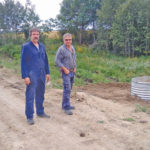Road washouts, soil erosion and other water-related damage are nothing new to any municipality, but some parts of Manitoba are especially vulnerable. Those living and farming around Riding Mountain National Park are all too familiar with the kind of havoc water rushing downstream creates. With the steepest slopes in the province in their region, Inter-Mountain






